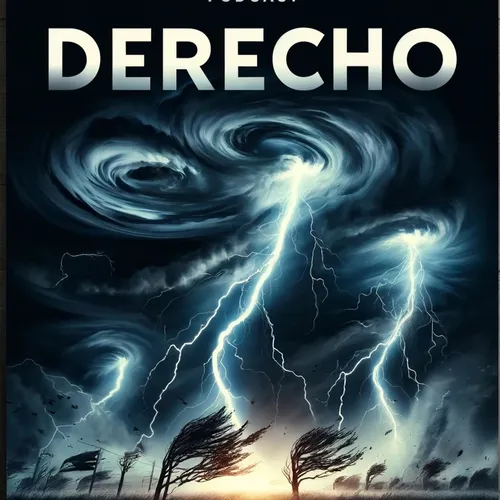Headline: Powerful Derecho Sweeps Across Northern Plains, Causing Widespread Damage
- Author
- Inception Point Ai
- Published
- Thu 11 Sep 2025
- Episode Link
- https://www.spreaker.com/episode/headline-powerful-derecho-sweeps-across-northern-plains-causing-widespread-damage--67719986
Listeners, in the past few days, meteorologists have been closely tracking a rapidly developing derecho event that swept across the Northern Plains of the United States this Monday. According to AOL Weather, a fierce line of severe thunderstorms formed along the northern edge of a persistent heat dome, organizing and intensifying through the afternoon and evening. These storms brought exceptionally strong, straight-line winds exceeding 75 miles per hour, with reports of tree damage, structural impacts, and widespread power outages stretching from South Dakota through southwest Minnesota into northwest Iowa. Communities like Aberdeen, Watertown, and Sioux Falls, South Dakota, found themselves in the core path, while there were ripple effects as far east as the upper Mississippi Valley, including Minneapolis-St. Paul.
Derechos are notable for the breadth of destruction they cause, rivaling hurricanes in their wind speeds but crossing hundreds of miles from origin to dissipation. For an event to be classified as a derecho, it must leave a swath of damaging winds at least 400 miles long and 60 miles wide, manifesting over a few hours as a tightly packed line of thunderstorms. According to meteorologist Stephen Corfidi, these storms often include isolated tornadoes and large hail, as witnessed in this week’s outbreak.
This is remarkably the second derecho to wallop the Northern Plains this summer. In late June, North Dakota and northern Minnesota were hit by a derecho that delivered wind gusts topping 106 mph, along with several tornadoes. The repeat nature of these events underlines a growing trend: severe convective storms—with derechos at the center—are increasingly common and more destructive throughout the central U.S. Zurich Insurance notes that in the most recent tally of billion-dollar weather disasters, a majority were severe convective storms and they occurred in precisely this central band.
As these systems grow more frequent, local officials and construction professionals are looking for ways to mitigate risk, particularly around infrastructure resilience and business interruptions. For instance, solar contractors in high-risk regions are adapting with hail-resistant panels and adaptive stowing technologies, hoping to better withstand sudden extreme wind events.
In the immediate wake of Monday's derecho, thousands were left without power, debris blanketed neighborhoods, and emergency warnings underscored the need for real-time alerts via smartphones and NOAA weather radio. Planning remains critical—from knowing where to shelter to having backup communications during severe weather. While tornadoes grab headlines, it's these massive, marathon windstorms that repeatedly test preparedness and recovery systems across the Midwest.
Listeners are urged to continue monitoring weather forecasts, especially severe thunderstorm outlooks from NOAA's Storm Prediction Center, which provides regular updates on risk levels and potential impacts in advance of events like this. As always, modern forecasting uses a combination of radar, satellite data, and forecaster expertise to provide actionable alerts.
Thanks for tuning in. Don't forget to come back next week for more on evolving weather risks and what you can do to stay safe. This has been a Quiet Please production, and for more, check out Quiet Please Dot A I.
Some great Deals https://amzn.to/49SJ3Qs
For more check out http://www.quietplease.ai
This content was created in partnership and with the help of Artificial Intelligence AI
